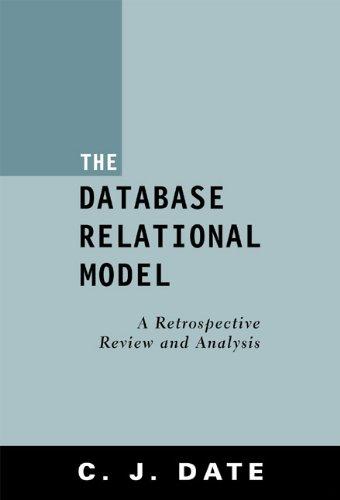Question
Please help Privacy is not something to take for granted as true privacy becomes increasingly challenging to find. In most day-to-day cases, you are aware
Please help
Privacy is not something to take for granted as true privacy becomes increasingly challenging to find. In most day-to-day cases, you are aware that your information is being collected. As you drive, video surveillance monitors for traffic conditions. When you purchase items with credit cards, your buying history is analyzed for marketing. As you use the Internet at work, your browsing habits might be monitored for performance. These are known impacts on personal privacy, but there are many other examples where your privacy is lost without your knowledge or consent.
Case Study
The U.S. Department of Veterans Affairs had a privacy data breach in 2006 that an agency employee said affected the records of 26.5 million veterans and their spouses. An employee at the agency reported the breach and said that a laptop he used at his home in Montgomery County, Maryland, had been stolen. This employee had been taking home a laptop that contained private information of the approximately 26.5 million veterans. This privacy information included the veterans' names, Social Security numbers, the dates of birth, and disability ratings.
On May 17, 2006, the Federal Bureau of Investigation (FBI) was informed of the breach, and it began an investigation along with the Veterans Affairs (VA) Inspector General's Office. During the investigation, it was discovered that more than the originally reported veterans and their spouses were affected by the theft. In fact, approximately 1.1 million active-duty military personnel were affected, as well as 430,000 members of the National Guard and 645,000 members of the Reserves. In addition, the investigation revealed other information, including:
On May 3, 2006, the theft occurred. The employee whose laptop was stolen reported the theft to his supervisors at the agency and to the Maryland police. On May 16, 2006, Veterans Affairs Secretary R. James Nicholson was told of the breach that resulted in unencrypted data being stolen. Supervisors at the agency knew of the theft on May 3 when it happened, but they failed to tell Mr. Nicholson until the May 16 date.
On May 22, 2006, the agency finally informed those who were affected by the breach. The agency announced that the laptop had been stolen. The agency reported that the information stolen included veterans' and their spouses' names, Social Security numbers, birth dates, and disability ratings. The agency said that the information did not include financial data or electronic health records.
The analyst who took the laptop home had been given permission to use the laptop at home. (The agency did not reveal this until after it had already said that the employee was fired for taking the laptop home.) The employee said that he had taken the laptop home regularly for three years.
Congress held a hearing on May 25, 2006. During this hearing, Secretary Nicholson admitted that the stolen information included disability ratings for 2.6 million people. On June 3, the agency admitted that approximately 50,000 active-duty personnel were also affected by the stolen data. By June 6, 2006, the agency had admitted that approximately 1.1 million active-duty military personnel were affected, as well as 430,000 members of the National Guard and 645,000 members of the Reserves. On June 29, 2006, an unidentified person turned the laptop over to the agency, which believes it will cost $100 million to $500 million to cover the data theft losses and prevent additional losses.
Discuss the case study by answering the following questions:
Was the employee justified in taking home the official data? Why or why not?
What are the possible consequences associated with the data loss?
Would the response of the agency have been different had the data theft occurred at work instead of happening at the employee's residence? Why or why not?
Step by Step Solution
There are 3 Steps involved in it
Step: 1

Get Instant Access to Expert-Tailored Solutions
See step-by-step solutions with expert insights and AI powered tools for academic success
Step: 2

Step: 3

Ace Your Homework with AI
Get the answers you need in no time with our AI-driven, step-by-step assistance
Get Started


